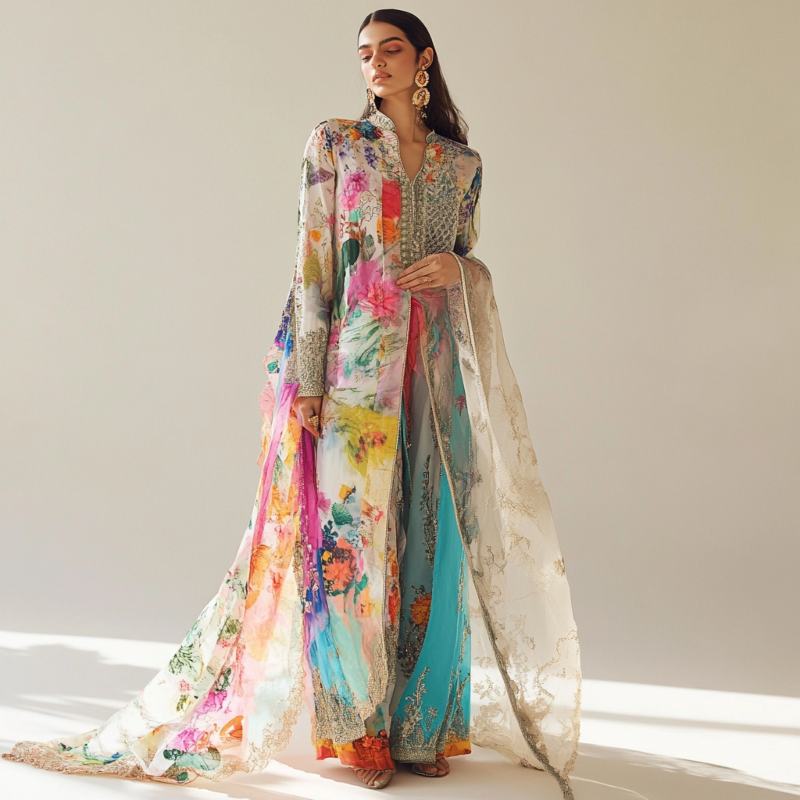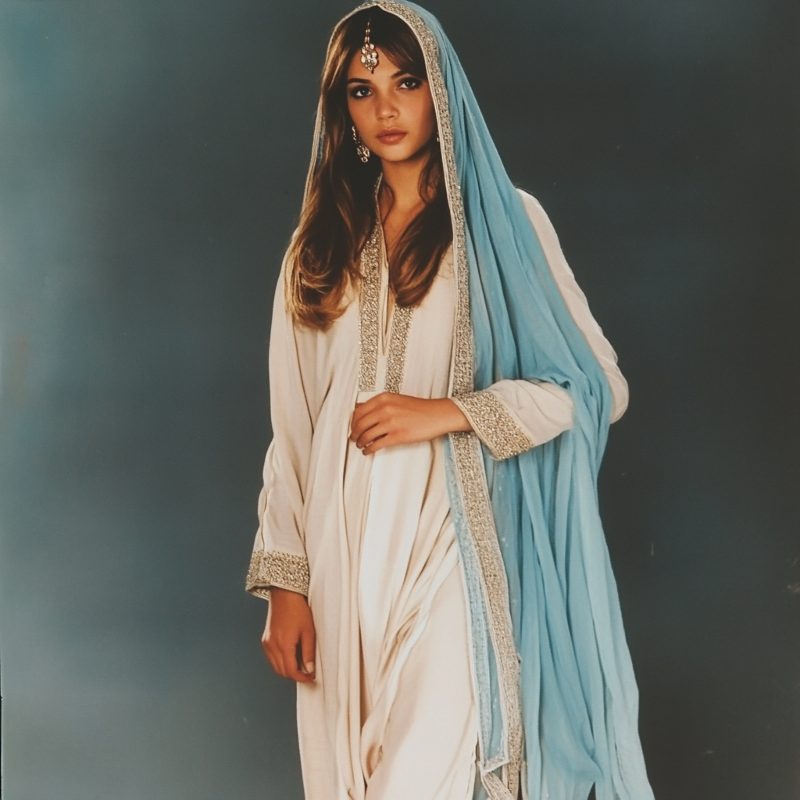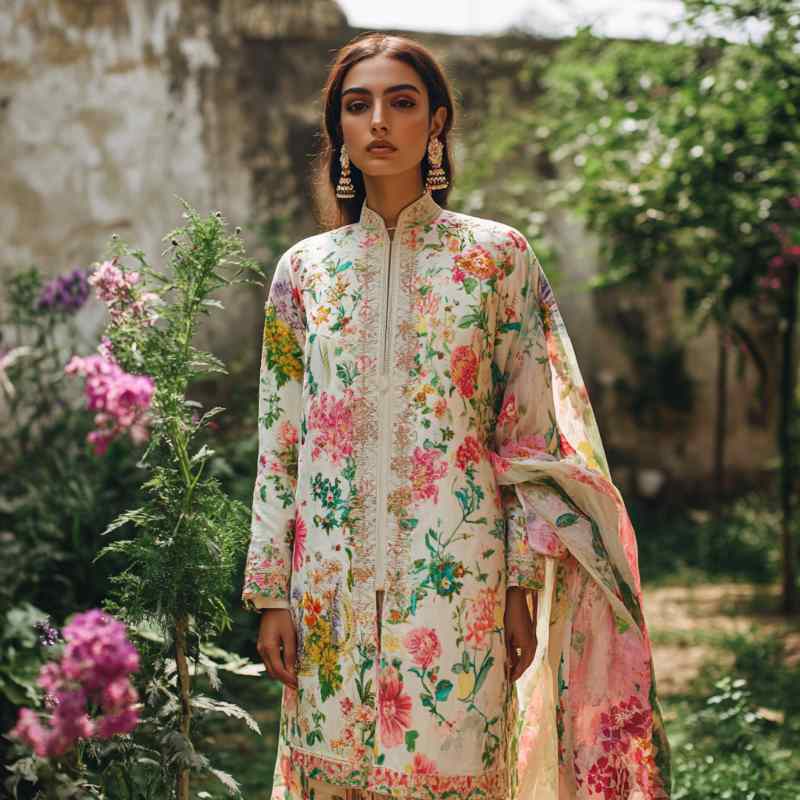Are Lawn Joras Really Worth it?
The Pakistani lawn industry has witnessed a significant boom in recent times, pieces of overpriced clothing that exude grandeur. Regular joras-turned into-art-turned into-couture-priceless, are they really worth it?
The fabric gained significant traction in the 90s, in local markets of Pakistan. This was a time of economic development and modernisation, which saw the rise of textile mills producing fabric.
In the early years lawn was primarily used for everyday wear. Simple dresses that were easy to wear for day-to-day tasks. They were so light, didn’t require ironing, and were easy to maintain.
As Pakistan’s fashion industry evolved and progressed, stakeholders quickly recognised its commercial potential. In the late 20th century, the Pakistani lawn industry witnessed a boom. With the burst in creativity, and the growing middle and upper classes in the country, coupled with an increasing appreciation for fashion and art created a demand for more sophisticated lawn clothing.
Textile tycoons encouraged and partnered with famous designers and began the production of lawn suits in a wide range of designs, colours, and prints. Couturiers loved the fabric; it was soft yet sturdy enough to hold its shape.
Breathable but not see-through, comfortable yet stylish, the affordability, comfort, and aesthetic appeal made them immensely popular among Pakistani women, thus, beginning the reign of lawn.
High-end brands introduced elaborate heavily embroidered, beadwork-ed designs, transforming simple lawn into luxury garments. The traditional shalwar kameez, a staple in Pakistan, became the canvas for showcasing intricate designs.
With the addition of laces, sophisticated embroidery and embellishments, these regular joras had turned into something amazing, it was art—transforming the ordinary into masterful elegance.

There’s often a high demand for luxury lawns during specific seasons and festivals, driving people to prioritise spending on these items despite their higher costs, especially during the scorching summer months.
Endorsements from celebrities and fashion influencers helped create a buzz around these collections with the curation of jaw-dropping campaigns. Designers continually innovated with lawn, creating unique patterns in alluring colours that captivated style-savvy buyers, making it a must-buy for every upcoming season.
Lawn and its use evolved; what was once worn mundanely soon became a symbol of style, luxury, and prestige, much like the advertisements. The earliest recorded adverts had distinct characteristics.
The first few only featured women’s silhouettes, with faces veiled behind a flowing dupatta or a tree; loose, simple clothing adorned the bodies of tall, thin, white models. These ads adapted relatively quickly, moving from extremely loose shalwar kameez to short frock-style kameez and churidar pyjamas.
From long sleeves to three-quarter sleeves, the clothes became much more stylish. Along with this came the inclusion of dancing and singing to music, which became prominent in the late 90s. However, one thing that remained evident across all these videos was the incorporation of Western ideals.
The use of white-skinned models, with blonde hair and blue eyes, represented the standard of ultimate beauty—the all-encompassing European woman—an influence on the people of Pakistan, which marketers used to their advantage.
Soon, the ads transitioned into something more relatable in the early 2000s. Instead of idealised representations, the focus shifted to showcasing the lives of people. From white models to desi women—brown-skinned and dark-haired—but, of course, since there had been an obsession with white skin, the models were often the palest shade of brown.
This change was monumental, albeit the bare minimum looking back; it was still change. Pakistani women flaunted lawn wear while engaging in household chores, often accompanied by make-believe husbands and children. It was relatable, personable, and reflected the ultimate Pakistani dream.
A shadi, husband, kids, and loving in-laws—the quintessential Pakistani dream—was being sold instead of just lawn clothing, all showcased by stunning models. These advertisements began to promote dreams and possibilities tied to wearing a particular lawn collection.
They targeted the emotions and sentiments of the audience rather than only presenting a fantasy. In contrast, other adverts airing during the same timeline maintained a similar focus to those in the 90s, still glamorising European beauty and culture.
Brands captured this image of modernity by shooting abroad, featuring white models draped in lawn, parading through foreign cities with dupattas billowing against backdrops like the New York skyline.

In less than a decade, Caucasian models and blue-eyed representations faded from the forefront. But were we truly past that? Were we ready to accept our brown skin and dark hair?
During the mid-2000s, the marketing style changed completely, and so did the lawn game. Lawn wasn’t just being sold as clothes anymore; it had become an ‘it’ club. This exclusive club included aunties who attended kitty parties. Flaunting their latest Prada bags paired with Valentino kitten heels. Speaking Urdu with an American accent despite having lived in Pakistan their entire lives.
It wasn’t just about wearing the latest collection; it had transformed into a competition of who could acquire the most exclusive collection the quickest. It became a race, who could grab the lawn jora first, get it stitched in time for Bano Auntie’s luncheon, and, most importantly, wear it before Sharmeela did?
Marketers target women through urgency and exclusivity under the guise of ‘limited edition,’ making the collections even more desirable and high-class. Brands often sold out immediately after launch, with “no stock available” signs appearing just two days later—oh, the horror!
But miraculously, there seemed to be enough stock for everyone after all. Since it had sold out once, everyone developed the fear of missing out; everyone had to have it. It was vital, it was necessary.
Marketing tactics also evolved, incorporating highly famous Indian actresses. Katrina Kaif, Kareena Kapoor, and Nargis Fakhri showcased lawn wear with chiffon dupattas flowing beside them, looking as ethereal as can be.
This surprised the Pakistani audience, as Bollywood actresses had always felt unattainable, seen as the pinnacle of beauty. For them to wear something that you and I could also wear sparked an insatiable demand.
Life would not continue if it weren’t in their wardrobes. This was when luxury lawn reached its peak; to this day, it remains as valuable as ever—almost like a national treasure.

Little pieces of overpriced clothing exuding grandeur and lavishness reside in the closets of DHA. Proving to be almost priceless because they came from that collection that Katrina wore once upon a time. But will it ever be made again?
‘This is where the black market comes into play, replicas, often low-quality imitations of luxury lawn clothing sets. They are nearly identical but sold in open bazaars at half the quality and a quarter of the price.
These replicas last only four washes before becoming unrecognisable. Shopkeepers often butcher the pronunciation of designer names while still demanding the original prices. This turns into a nightmare for designers, brands, and DHA aunties alike. Their exclusive, one-of-a-kind pieces are quickly imitated and sold at such low prices that anyone can get their hands on them.
How could this happen? Oh, the disgrace! The entire concept behind luxury lawn was exclusivity and cliquishness. People buying these overpriced, unstitched, underwhelming pieces of cloth weren’t just purchasing clothes. They were buying the experience and the division that came with it.
“We are different; we wear branded clothes, and you don’t.” Suddenly, that wasn’t the case anymore; anyone could wear it, anywhere. Luxury lawn is both a blessing and a curse, whether it’s due to the hefty price tag or the fine kapra. Are the lawn wars or the competition worth it? I leave that up to you.

